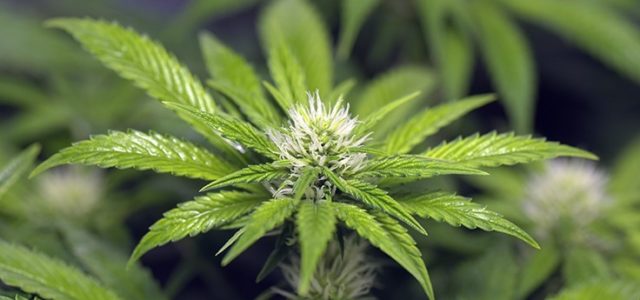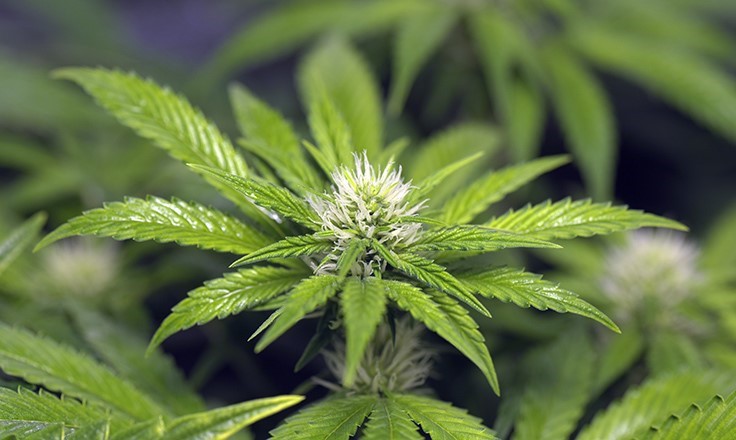House Committee Approves Cannabis Research Bill, Aurora Cannabis Buys South American Lab: Week in Review
Marijuana Industry News September 14, 2018 MJ Shareholders


It’s no secret that quality plant material produces quality extracts, but challenges lie in ensuring this quality and finding the right extractor to work with, according to Pete Patterson, co-founder and chief operating officer of Vitalis Extraction Technology, a Canada-based engineering and manufacturing company that produces industrial supercritical CO2 extraction systems for the cannabis industry.
Here, Patterson offers tips on growing cannabis for and selling it to an extractor to ensure quality, consistency and solid relationships between cultivator and processor.
1. What you put in is what you get out.
First and foremost, Patterson says, the amount of effort and quality a grower puts into his or her cultivation process determines the quality of the end product.
“It’s always going to be a consideration of the quality of the plant material, outdoor vs. indoor [or] greenhouse,” he says.
Pesticides are also a big factor in extraction, Patterson adds. Most states require that cannabis products pass pesticide testing before they can be brought to market, and these states often outline authorized pesticides and ban other, non-authorized pesticides. Some states or municipalities also test for microbes, toxins and heavy metals, Patterson says, so it is imperative that growers pay attention to these regulations and build their cultivation practices accordingly.
“We’re starting to see some heavy metals being collected in the harvesting process, and that ending up in the end product,” he says. “Sometimes, the hemp from … combines actually are depositing metals just through the harvesting process, and that’s actually been found in some of these end products.”
In addition, groundwater can sometimes be contaminated in industrial farm areas, Patterson adds, and watering plants with contaminated water can cause testing failures, even though a cannabis cultivator is not using pesticides in his or her facility.
“Test your water source and make sure that you have some control over your water source,” he says. “The cultivators in Canada have very tight controls over their water source and anything coming into their rooms, so all the water that’s coming in actually goes into a reservoir tank and that reservoir tank is tested before it’s ever deployed to the plants.”
2. Know what the end product will be.
The type of plants cultivators grow and the way they are prepared for extraction may ultimately depend on the targeted end product, Patterson says, so growers should be in conversation with processors to know what that end product will be.
“Transparency and communication are always going to be the critical factors,” he says.
If high-potency concentrates are the end result, for example, extractors will need to start with high-potency biomass, he says.
“If you want biomass to make concentrates that are going to have a mixture of THC and CBD, that’s also where that cultivation process is going to come into play, … picking the right strains … that have that type of ratio that’s … desired or demanded by the extraction community for the types of products that they’re making,” he says.
And if the processor wants to make distillate, they may be looking for trim, which must be dried to a moisture level of 10 percent of below, sealed and stored in a cool, dry place, so it does not collect moisture or mildew in storage or in transit to the extraction facility, Patterson says. Or, processors may be looking for higher quality flower with high concentrations of specific cannabinoids or terpenes.
“So, if [cultivators are] drying flower, they’d want to make sure that they’re in communication with that end processor because [when] drying that flower for extraction, you’ll actually want to cure that flower or take it through a drying methodology which will preserve the terpenes,” he says.
Heat is another consideration that depends on the end product, Patterson adds, as it relates to the conversion of THC to THC-A. Some extractors will want to preserve the acid form of the cannabinoids due to their health benefits, for example.
“[Take] a look at what you’re drying—if it’s your trim or if it’s flower—and what [the extractor] requires on the back end,” Patterson says. “Do they require product that’s been cured so it has that terpene preservation, or do they want
quickly dried [with] lots of heat because they’re just going to be putting it into a distillate product later on?”3. Align yourself with brands that share your values.
Cultivators should thoroughly vet the extractors they plan to work with and ultimately choose one that shares the same values, Patterson says. Key considerations include ensuring that the extractor has a distribution model, he says, as well as finding a reputable brand.
For example, some brands may not advertise specific strains on their end products, Patterson says, opting instead to only promote the THC and CBD concentrations. If a cultivator is growing unique strains, he or she might not want to align with this sort of brand.
On the other hand, cultivators who are less concerned with specific strains may want to align with an extractor looking for a distillation-type product, where they focus mostly on the THC concentration, he adds.
“Find someone that you can align with from a value and a brand perspective and [who] will respect the time and energy that you put into the product, whether it’s a little time and energy on the cultivation side, or it’s a lot of time and energy,” Patterson says.
In addition, correlations between different strains or combinations of terpenes and cannabinoids and their effect on medical conditions are beginning to emerge, he adds, and cultivators should be aware of these, potentially aligning themselves with extractors looking for these particular products.
4. Consistency is key.
Consistency is one of the biggest factors extractors desire when looking for material, and consistency can take a couple different forms: consistency in supply and consistency in biomass.
Consistency in supply means that cultivators are well-organized in their harvests, and they are not regularly losing crops to pests and disease, Patterson says. “They’re able to provide that consistent supply so that brand or that processor can be outputting for the market.”
Consistency in biomass means that every batch of a particular strain from a particular cultivator consistently tests at the same THC and CBD levels, he says, which is important for processors when they create their product formulations.
For example, if a processor makes and distributes vape pens out of 100 lbs. of OG Kush that tests at 15-percent THC and three-percent CBD, the company will want that particular concentration again to keep producing a consistent product.
“That’s what the end consumer … [is] expecting, is consistency now,” Patterson says. “Some of the advantages of these regulated markets is we get a consistent, trusted, safe product, and that all starts with cultivation. If they can cultivate consistently with similar levels of THC or CBD or similar profiles of cannabinoids, … then that’s going to make the processors and the brands much happier … because it makes their lives a lot more consistent and it builds trust with that end consumer.”
Top Image: © Mitch | Adobe Stock
MJ Shareholders
MJShareholders.com is the largest dedicated financial network and leading corporate communications firm serving the legal cannabis industry. Our network aims to connect public marijuana companies with these focused cannabis audiences across the US and Canada that are critical for growth: Short and long term cannabis investors Active funding sources Mainstream media Business leaders Cannabis consumers









